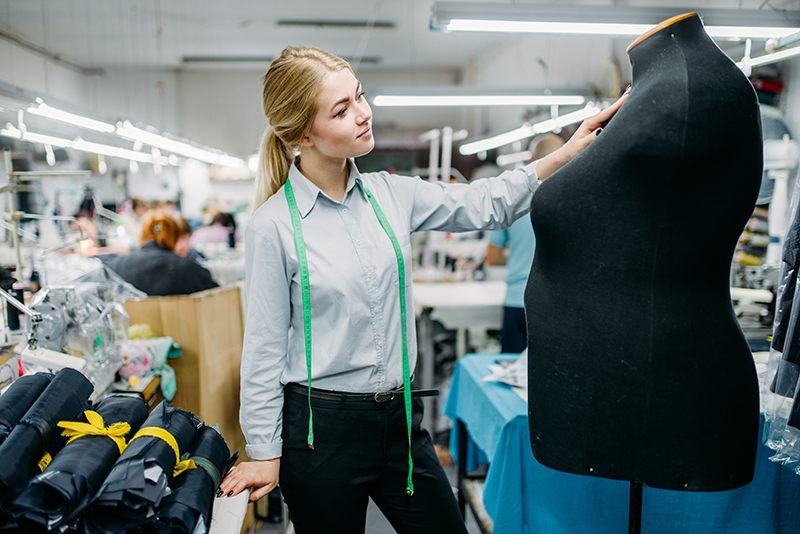“Your ‘slimming’ dress makes me look boxy,” a European buyer once told me, holding up a sample we’d spent months perfecting. That feedback stuck with me. “Slimming” isn’t just about tight fits—it’s about strategic illusion. As a clothing exporter with 12 years of experience tailoring garments for global markets, I’ve learned that mastering “body-sculpting” (pattern-making) is less about magic and more about decoding the body’s hidden rules. Let’s unpack the logic.

The Foundation: It’s About the Body, Not the Fabric
Great pattern-making starts with understanding human anatomy—not just measurements, but proportions. Every body has “problem areas” (e.g., love handles, sloped shoulders) and “asset areas” (e.g., defined waist, toned legs). A sculpting pattern amplifies assets while camouflaging flaws. Here’s how:
1. The Science of “Visual Balance”
The human eye seeks symmetry and proportion. A well-drafted pattern balances these intuitively. For example:
- Hourglass figures: Highlight the waist with princess seams (vertical darts) to emphasize curves.
- Rectangular figures (straight up-and-down): Add contoured side panels or a peplum hem to create the illusion of a waist.
- Apple shapes (broad midsection): Use V-necks to elongate the torso and A-line skirts to skim over the hips.
Mistake to Avoid: One-size-fits-all patterns. A “slimming” dress that works for a pear shape will drown an hourglass figure.
2. Fabric as a Co-Designer
No pattern works without considering fabric behavior. A stiff cotton won’t drape like a fluid silk, and a stretch knit requires different seam allowances than a rigid denim.
Key Rule: Match fabric weight to the body zone. For example:
- Problem area (e.g., upper arms): Use a slightly heavier knit (200–220gsm) with a darted cap sleeve to smooth bulk.
- Asset area (e.g., calves): Opt for a lightweight, drapey fabric (120–150gsm) to accentuate shape.
Pro Tip: Test patterns with “wear trials.” Have fit models walk, sit, and bend—their movement reveals where the pattern pulls or sags.
3. The Art of “Hidden Adjustments”
Sculpting patterns rely on subtle tweaks, not dramatic overhauls. Here are three industry secrets:
- Dart Manipulation: Move dart points (e.g., from the waist to the hip) to redirect fullness. A well-placed dart can make a waist appear 2–3cm smaller without tight lacing.
- Princess Seams: These vertical seams follow the body’s natural curves. On a back pattern, shifting a princess seam 1cm outward can eliminate “back fat” bulges.
- Yokes: Horizontal panels (yokes) at the chest or waist distribute fabric evenly. A contoured yoke on a blouse can flatten a protruding sternum while enhancing shoulder definition.
Case Study: From “Boxy” to “Breathtaking”
Last year, we worked with a Korean brand struggling with their “slimming” blazers. Customers complained they “fit tight but looked shapeless.” Our team analyzed their pattern:
- Issue 1: The shoulder slope was too shallow (15° instead of the ideal 18–20°), making shoulders look broad.
- Issue 2: Darts at the waist were too short (only 8cm), failing to contour the natural waistline.
- Issue 3: The back panel had no yoke, causing fabric to bunch under the arms.
We revised the pattern:
- Added 3° to the shoulder slope for a slimmer silhouette.
- Extended waist darts to 12cm, hugging the body’s curve.
- Inserted a curved back yoke to smooth underarm bulk.
Result? Returns dropped by 40%, and the brand saw a 25% uptick in repeat orders. “It’s like the blazer was made for my body,” one customer wrote.
FAQs: Your Pattern & Sculpting Questions, Answered
Q: Why does my “slimming” top gap at the back when I move?
A: Likely a dart placement issue. If darts are too shallow or misaligned with your natural waistline, the fabric can’t adjust to movement. A pattern with “action darts” (longer darts that curve with the body) fixes this.
Q: Can a pattern make me look taller?
A: Absolutely. Vertical elements like princess seams, monochromatic color blocking, and high side slits (on dresses) create a “lengthening” effect. Avoid horizontal stripes or overly wide belts—they shorten proportions.
Q: Are custom patterns worth the cost?
A: For brands targeting specific body types (e.g., plus-size, petite), yes. Standard patterns assume a “median” figure—custom patterns adjust for unique proportions (e.g., shorter torsos, longer legs), ensuring better fit and comfort.
Wrapping Up: Patterns Are the Language of Fit
“Slimming” is a promise—but “body-sculpting” is a commitment. It’s about understanding that every stitch, dart, and seam tells a story about the wearer’s body. At Sheen, we don’t just make clothes; we engineer confidence. Our in-house pattern studio works with brands worldwide to translate their vision into patterns that flatter, adapt, and endure.
Ready to upgrade your collection from “boxy” to “breathtaking”? Explore our pattern-making services, request a free fit analysis, or reach out for a consultation.
Stay precise. Stay proportional. Stay Sheen.

